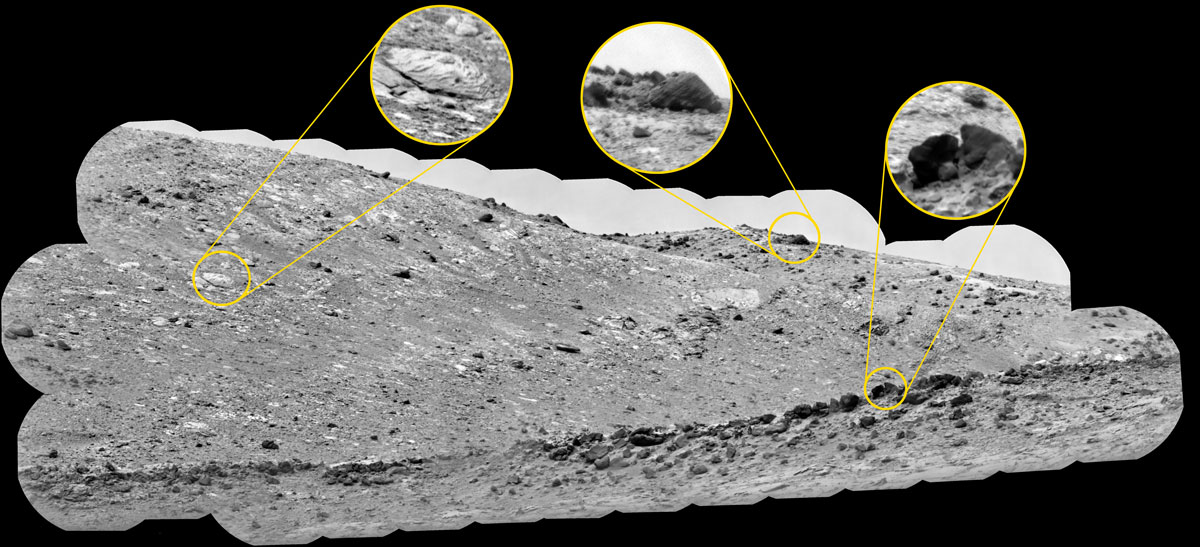ChemCam Mosaic of Gediz Vallis Ridge

| Credit | NASA/JPL-Caltech/LANL/CNES/CNRS/IRAP/IAS/LPG |
|---|---|
| Language |
|

NASA’s Curiosity Mars rover used its ChemCam instrument to view boulders on Gediz Vallis Ridge Nov. 15 to 17, 2022, the 3,653rd to 3,655th Martian days, or sols, of the mission. These boulders are thought to have been washed down in a debris flows in the ancient past and are probably some of the youngest evidence of liquid water Curiosity will see on Mount Sharp.
Figure A is the same image with close-ups of several boulders.
Curiosity has been ascending the foothills of the 3-mile-tall (5-kilometer-tall) mountain since 2014. Water ebbed and flowed on Mount Sharp billions of years ago, at times forming lakes and rivers that would dry up and flood repeatedly. Gediz Vallis is a part of the mountain where water once flowed down; Curiosity’s scientists are interested in the ridge in part because it includes boulders like these that were washed down from much higher up the mountain, where Curiosity won’t be able to reach.
From left to right, the boulders depicted in the circles are approximately 984 feet (300 meters), 1,312 feet (400 meters), and 656 feet (200 meters) away. Based on these distances, the width of the boulders are estimated to be (again, from left to right) 4 feet (120 centimeters), 3.3 feet (100 centimeters), and 2 feet (60 centimeters).
This scene is made up of 52 individual images captured by ChemCam’s Remote Micro-Imager; the images were stitched together after being sent back to Earth. Early in the mission, the team discovered that the imager, originally designed to view targets shot by ChemCam’s laser, can also be used like a telescope, looking at distant horizons rather than nearby rock textures.
NASA’s Jet Propulsion Laboratory in Southern California built Curiosity and leads its mission on behalf of NASA Headquarters in Washington. The U.S. Department of Energy’s Los Alamos National Laboratory, in Los Alamos, New Mexico, developed ChemCam in partnership with scientists and engineers funded by the French national space agency (CNES), the University of Toulouse, and the French national research agency (CNRS).
For more information about Curiosity, visit http://mars.jpl.nasa.gov/msl.


